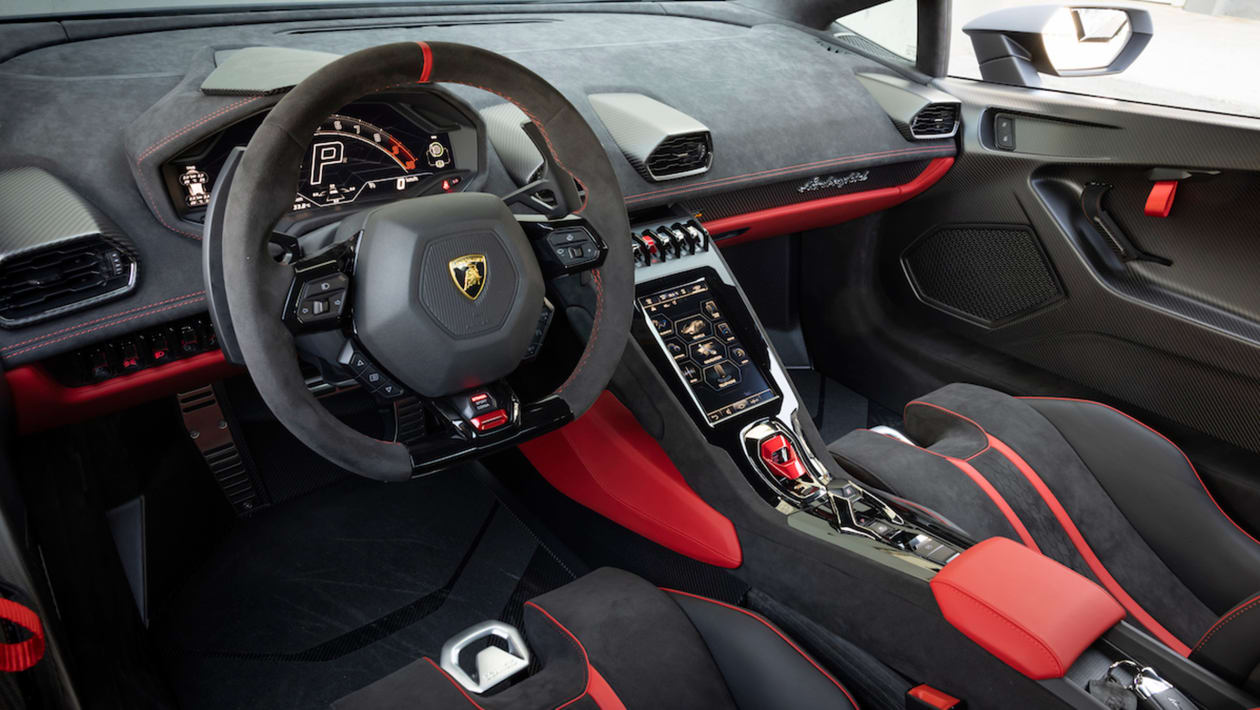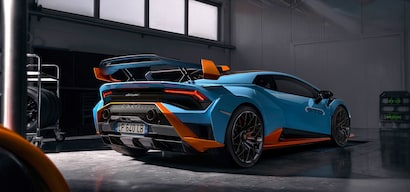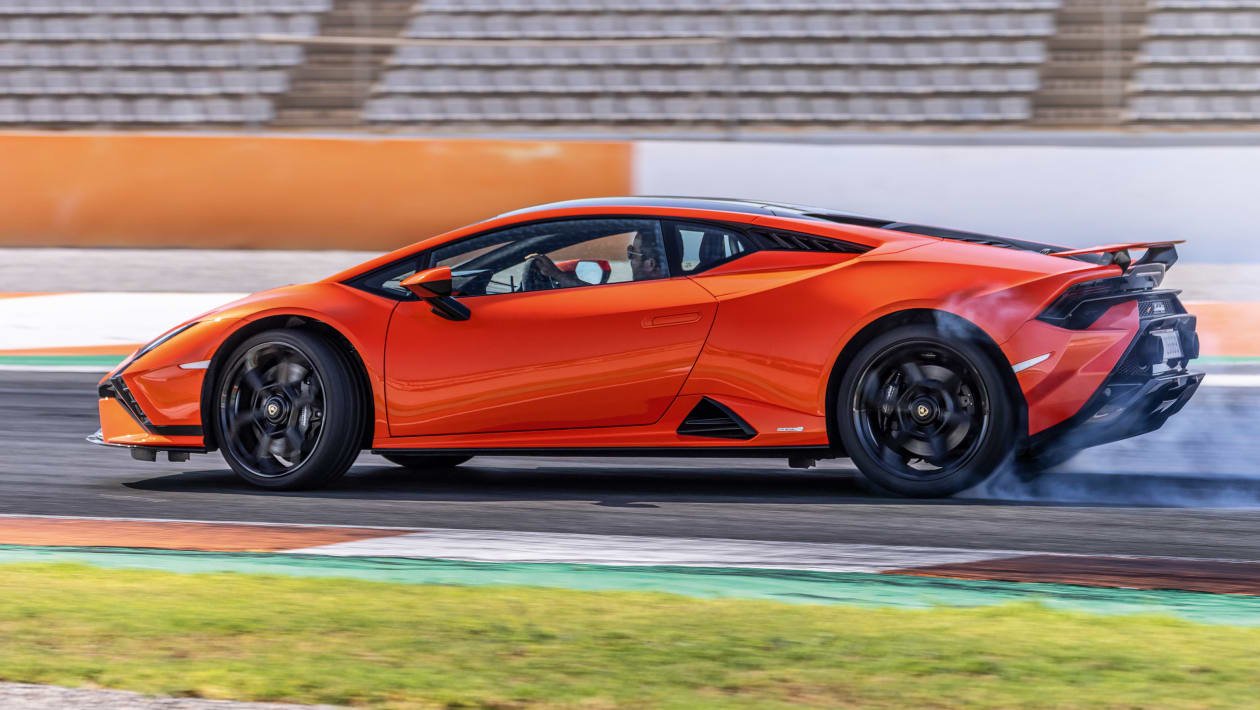1. Introduction
Lamborghini Huracan Braking Performance Analysis: When discussing high-performance supercars, much attention is often given to speed, power, and agility. However, an equally critical element is braking performance. For a vehicle like the Lamborghini Huracán, known for its exhilarating speed and precision handling, the ability to stop effectively and consistently is paramount. A car capable of reaching high velocities must also offer state-of-the-art braking to match its performance on the road or track. In this article, we will explore the braking performance of the Lamborghini Huracán, focusing on its technology, metrics, and real-world testing.
2. Technical Specifications of the Braking System

The Lamborghini Huracán comes equipped with a state-of-the-art braking system designed to handle extreme speeds and the demands of track performance.
- Brake Components:
Lamborghini has fitted the Huracán with standard carbon-ceramic brakes, a popular choice in supercars for their heat resistance and durability under pressure. The front brake calipers feature six pistons, while the rear calipers utilize a four-piston setup. This combination provides a robust clamping force, ensuring effective deceleration even under the most demanding conditions. - Disc Size:
The Huracán’s braking discs are generously sized to handle the stress of high-speed driving. The front discs measure 380 mm in diameter, and the rear discs come in at 356 mm. These discs are composed of a carbon-ceramic material that offers exceptional fade resistance, allowing the brakes to perform consistently even after repeated hard braking sessions. - Brake Cooling Mechanisms:
Effective braking requires proper cooling to maintain performance during aggressive driving. The Huracán features carefully engineered airflow management, directing cool air to the brake components through dedicated ducts. This helps prevent overheating, which could otherwise lead to reduced braking performance and increased wear.
3. Braking Performance Metrics
Performance metrics provide a clearer understanding of how the Huracán performs under braking in real-world conditions.
- Stopping Distance:
The Huracán delivers impressive stopping power, with a braking distance of just 31.9 meters from 100 km/h to 0, thanks to its high-performance carbon-ceramic brakes. When decelerating from 200 km/h, the car halts in approximately 114 meters, which is outstanding for a vehicle of its class. - Deceleration Forces:
Under hard braking, the Huracán generates over 1.4 Gs of deceleration, which is on par with many track-focused cars. The car’s ability to generate such forces highlights the precision of its braking system, especially during emergency stops. - Real-world Performance Data:
In comparison to rivals such as the Ferrari 488 and McLaren 720S, the Huracán’s braking performance holds its own. Its stopping distances are competitive, and its braking behavior is noted for being predictable and confidence-inspiring, whether on the road or track.
4. Advanced Braking Technologies

The Huracán’s braking system benefits from advanced technologies that enhance its performance under different conditions.
- ABS and Traction Control Integration:
Lamborghini has finely tuned the Huracán’s Anti-lock Braking System (ABS) for high-performance driving. It ensures that the wheels don’t lock under heavy braking, optimizing stopping power and stability, even at high speeds. - Electronic Stability Control:
The stability control system works in tandem with the braking system to maintain vehicle control under sudden braking. It plays a key role in distributing braking forces to the wheels that need it most, especially during cornering or on slippery surfaces. - Adaptive Brake Assist:
The adaptive braking system in the Huracán is designed to predict the driver’s braking needs based on their speed and driving habits. In emergency scenarios, the system primes the brakes for maximum stopping power, ensuring quicker response times when needed.
5. Braking Performance in Different Conditions
The Huracán’s braking capabilities shine under various conditions, showcasing its versatility beyond just dry, ideal situations.
- Dry Road Performance:
On dry tarmac, the Huracán’s brakes offer sharp, immediate response. The pedal feel is progressive, allowing the driver to modulate braking force with precision. This contributes to shorter stopping distances and a greater sense of control. - Wet and Slippery Surfaces:
Thanks to its advanced traction control and ABS systems, the Huracán maintains good braking performance on wet roads. The carbon-ceramic brakes are less prone to losing efficiency when exposed to moisture, ensuring that the car’s stopping power remains consistent. - Track Performance:
On the track, where repeated hard braking is common, the Huracán’s braking system exhibits excellent fade resistance. Even after several laps of hard driving, the carbon-ceramic brakes maintain their stopping power without a noticeable decline in performance. This makes the Huracán an ideal candidate for those who enjoy track days.
6. Impact of Driving Modes on Braking Performance

Lamborghini provides the Huracán with multiple driving modes, each affecting the vehicle’s braking characteristics.
- Strada, Sport, and Corsa Modes:
In Strada (road) mode, braking is calibrated for a more comfortable and controlled response suitable for daily driving. Sport mode offers a more aggressive brake response, while Corsa (track) mode maximizes braking performance with minimal electronic interference, allowing for more direct control by the driver. - Driver-Controlled Brake Modulation:
Depending on the mode, the driver can feel the difference in how the braking system reacts. In Corsa mode, the car’s electronic systems allow more freedom, giving skilled drivers the ability to fine-tune their braking inputs for optimal lap times.
7. Wear and Maintenance Considerations

Owning a Lamborghini Huracán requires understanding the long-term maintenance of the braking system.
- Brake Pad and Disc Longevity:
While carbon-ceramic brakes are known for their durability, regular track use can increase wear. However, under normal driving conditions, these brakes last much longer than conventional steel brakes, offering extended service intervals. - Maintenance Requirements:
Maintenance of the braking system can be expensive. Carbon-ceramic discs and specialized pads come with a high price tag, but they also require less frequent replacement compared to traditional brakes. Owners should factor in these costs when considering long-term ownership. - Owner Experiences:
Lamborghini Huracán owners report that the brakes offer reliable performance over time, with few experiencing issues related to brake fade or wear under normal driving. However, those who frequently use the car on the track may need to replace components more regularly.
8. Conclusion
The Lamborghini Huracán’s braking system is a vital component of its overall performance package. With its advanced carbon-ceramic brakes, high-tech driver aids, and consistent performance under various conditions, the Huracán delivers an impressive braking experience that matches its high-speed capabilities. For drivers who demand precision, control, and stopping power, the Huracán’s braking system stands as one of the key highlights of the car, ensuring safety and performance are never compromised.
FAQs and Tips for Lamborghini Huracán Braking Performance
FAQs:
- What type of brakes does the Lamborghini Huracán use?
- The Huracán is equipped with carbon-ceramic brakes, which provide superior stopping power, fade resistance, and durability compared to traditional steel brakes.
- How quickly can the Lamborghini Huracán stop from 100 km/h?
- The Huracán can come to a complete stop from 100 km/h in approximately 31.9 meters, which is a top-tier performance in its class.
- Do the Huracán’s brakes perform well on the track?
- Yes, the Huracán’s carbon-ceramic brakes are designed to handle the extreme conditions of track driving. They offer excellent fade resistance and remain effective after repeated high-speed stops.
- How do the different driving modes affect braking performance?
- The Huracán features Strada (road), Sport, and Corsa (track) driving modes, each with varying levels of braking assistance. Strada mode offers smoother, more gradual braking, while Corsa provides the most direct and aggressive braking feedback, ideal for track use.
- What is brake fade, and does the Huracán experience it?
- Brake fade occurs when brakes overheat and lose effectiveness. Thanks to its carbon-ceramic brake system and advanced cooling design, the Huracán experiences minimal brake fade, even under heavy use.
- How long do the carbon-ceramic brakes last?
- The lifespan of carbon-ceramic brakes depends on usage. Under normal driving conditions, they can last significantly longer than conventional brakes. However, frequent track use may reduce their lifespan, requiring more regular maintenance.
- What are the maintenance costs of the Huracán’s braking system?
- The cost of replacing carbon-ceramic brake components can be high, but their longevity under normal conditions helps offset frequent replacements. Regular inspections and maintenance are key to ensuring optimal performance.
Tips for Maximizing Braking Performance in the Lamborghini Huracán:
- Warm Up the Brakes for Optimal Performance:
- Carbon-ceramic brakes perform best when they reach operating temperature. During spirited driving or track sessions, allow time for the brakes to heat up to ensure maximum stopping power.
- Choose the Right Driving Mode:
- For everyday use, stick to Strada mode to ensure smooth and comfortable braking. For more aggressive driving or track use, switch to Corsa mode to experience sharper, more responsive brake behavior.
- Monitor Brake Wear:
- Regularly inspect the brake pads and discs, especially if you use the Huracán for track days. Worn-out pads or discs can reduce braking efficiency and increase stopping distances.
- Maintain Proper Brake Cooling:
- Ensure that the cooling ducts are clear of debris and functioning properly. Effective cooling prevents overheating and ensures consistent braking performance over extended periods of high-intensity driving.
- Brake Modulation:
- Practice smooth and progressive braking inputs to avoid triggering the ABS unnecessarily. This can help improve control and reduce wear on the braking system, especially during track sessions.
- Service Your Brakes Regularly:
- Adhere to the manufacturer’s recommended maintenance schedule. Even though carbon-ceramic brakes are low-maintenance, periodic checks and servicing will extend their lifespan and maintain performance.
- Use the Right Tires:
- The performance of the brakes is only as good as the grip provided by the tires. Ensure that your tires are in good condition, with proper tread depth and pressure, to maximize braking efficiency.
